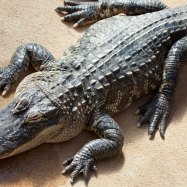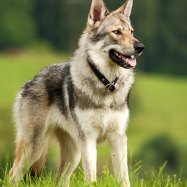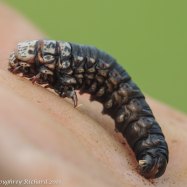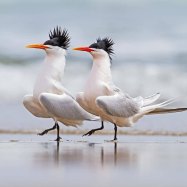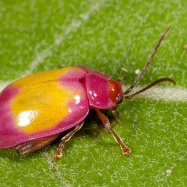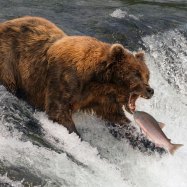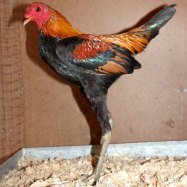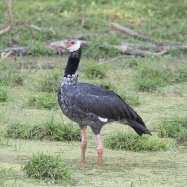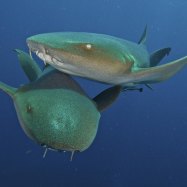
Flying Squirrel
8-12 inches
The flying squirrel is a graceful and agile creature found in trees, belonging to the Sciuridae family. With a slender body and a length of 8-12 inches, they are known for their ability to glide through the air. Spot one in action and be amazed by its graceful movements! #flying squirrel #animals #nature.
Animal Details Summary:
Common Name: Flying Squirrel
Kingdom: Animalia
Habitat: Wooded areas
Flying Squirrels: The Most Fascinating Creatures of the Skies
The world of animals is full of diverse and intriguing creatures, from the savanna-dwelling lions to the deep-sea dwelling octopuses. But perhaps one of the most fascinating creatures is the flying squirrel, a small and agile mammal that glides through the air with ease. In this article, we'll delve into the world of the flying squirrel, exploring its amazing features and behaviors that make it stand out from other animals.The Scientific Classification of Flying Squirrels
Before we dive into the details of flying squirrels, let's first understand its scientific classification Flying Squirrel. Flying squirrels belong to the tribe Pteromyini, which is a group of tree squirrels commonly known as "flying squirrels" or "gliding squirrels". They are scientifically known as Pteromyini and belong to the animal kingdom Animalia, the phylum Chordata, the class Mammalia, and the order Rodentia. They are also a part of the family Sciuridae, which includes other familiar creatures like chipmunks and ground squirrels.The Common Name and Distribution of Flying Squirrels
As their name suggests, flying squirrels are known for their ability to glide through the air, a unique feature that sets them apart from other squirrels. They are commonly found in wooded areas, as they rely on trees for both food and shelter. Flying squirrels can be found in different parts of the world such as North America, Europe, and Asia, with various species inhabiting different regions. Some of the countries where they are found include Canada, Japan, and Russia.The Appearance and Adaptations of Flying Squirrels
Flying squirrels are relatively small in size, ranging from 8 to 12 inches in length, with their tail accounting for about half of their total length. Their body shape is slender and agile, making them perfect for gliding through the air Frigatebird. Unlike other squirrels, they have a loose flap of skin between their front and hind legs, known as a patagium, which allows them to glide with ease.The coloration of flying squirrels varies but is usually shades of brown or gray, which helps them to blend in with their surroundings. This camouflage is essential for their survival as it helps them to avoid predators in their natural habitat. Additionally, their large, dark eyes provide them with excellent eyesight to navigate through the trees and spot potential threats.
One of the most remarkable adaptions of flying squirrels is their ability to glide. They can glide up to 300 feet in a single glide, and with their ability to steer and control their flight, they can land precisely on a chosen target. This skill enables them to evade predators and travel quickly between trees without needing to go to the ground.
The Feeding Habits of Flying Squirrels
Flying squirrels are omnivorous, which means they eat both plants and animals. They have a varied diet that includes nuts, seeds, fruits, insects, and even occasionally birds' eggs. They are also known to eat fungi found in trees and will even consume sap or tree buds if other food sources are scarce. Their long and sharp front teeth make it easy for them to break open nuts and seeds.Interestingly, flying squirrels have a special adaptation when it comes to their feeding habits. Since they are primarily nocturnal, they have a keen sense of smell and rely on their ability to find food in the dark. They also have a unique adaptation in their diet, storing extra food in their cheek pouches to take back to their nests.
The Behavior and Habitat of Flying Squirrels
Flying squirrels are nocturnal creatures, meaning they are active at night and rest during the day. They are solitary animals, only coming together during the breeding season. They are also territorial and will mark their territory using their scent glands to warn off intruders.As mentioned earlier, flying squirrels prefer to live in wooded areas with access to trees. They are perfectly adapted to this habitat, with their sharp claws allowing them to climb and their flying abilities enabling them to travel between trees with ease. They also build their nests in tree cavities, using grass, twigs, and bark to create a comfortable home.
Conservation Status and Threats to Flying Squirrels
The International Union for Conservation of Nature (IUCN) lists some species of flying squirrels as least concern, meaning they are not currently facing any major threats. However, other species, such as the Japanese Giant Flying Squirrel, are listed as vulnerable due to habitat loss and fragmentation.One of the main threats to flying squirrels is deforestation, as it reduces the availability of their natural habitat. As trees are cut down for development and agriculture, flying squirrels face challenges in finding food and suitable nesting sites. In some areas, flying squirrels are also hunted for their fur, which is used to make clothing and accessories.
The Fascinating World of Flying Squirrels
Flying squirrels are truly remarkable creatures, with their unique abilities and adaptations making them stand out in the animal kingdom. Their ability to glide through the air with precision and grace is perhaps their most extraordinary feature, making them one of the most fascinating creatures of the skies. But as with many other animal species, their survival is threatened by human activities, making it essential for us to take steps to protect and preserve their natural habitats. Let's appreciate and admire these incredible creatures, and work towards ensuring that they continue to soar through the skies for future generations to come.
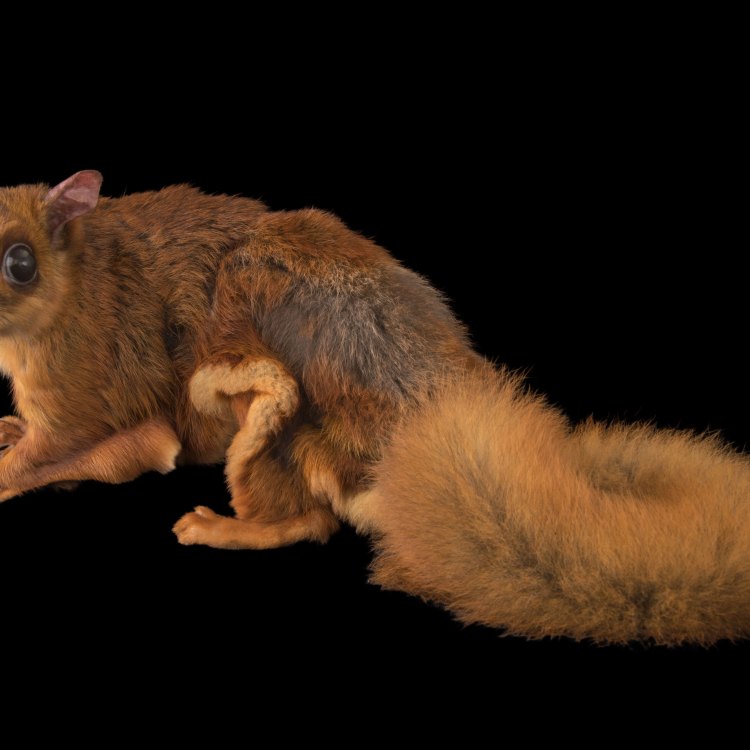
Flying Squirrel
Animal Details Flying Squirrel - Scientific Name: Pteromyini
- Category: Animals F
- Scientific Name: Pteromyini
- Common Name: Flying Squirrel
- Kingdom: Animalia
- Phylum: Chordata
- Class: Mammalia
- Order: Rodentia
- Family: Sciuridae
- Habitat: Wooded areas
- Feeding Method: Omnivorous
- Geographical Distribution: North America, Europe, and Asia
- Country of Origin: Various
- Location: Trees
- Animal Coloration: Varies, usually shades of brown or gray
- Body Shape: Slender and agile
- Length: 8-12 inches
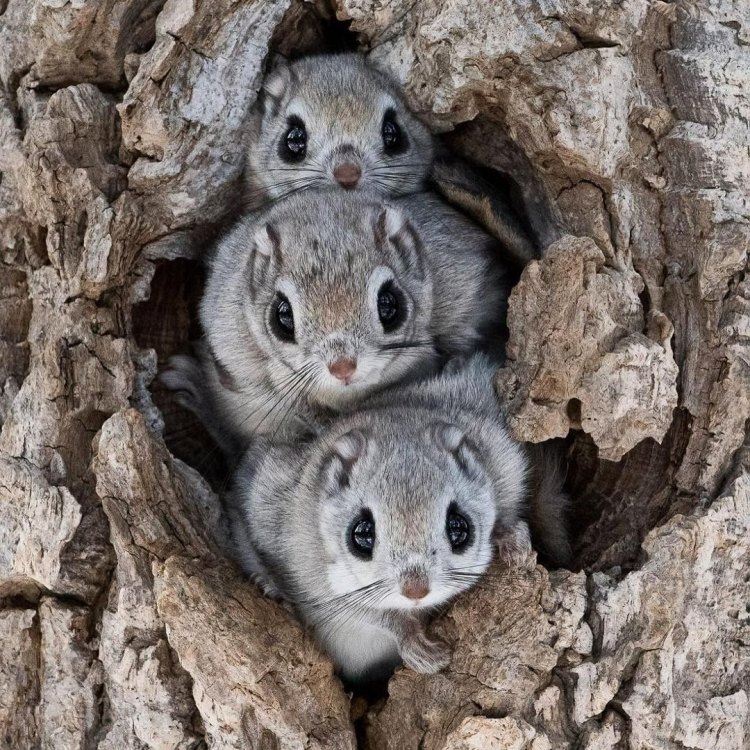
Flying Squirrel
- Adult Size: Small to medium-sized
- Average Lifespan: 5-6 years
- Reproduction: Sexual
- Reproductive Behavior: Mating occurs once per year
- Sound or Call: Some species make chirping, chattering, or trilling sounds
- Migration Pattern: Some species migrate short distances
- Social Groups: Can be solitary or live in small groups
- Behavior: Nocturnal, arboreal, and capable of gliding through the air using a patagium
- Threats: Habitat loss, predation, and hunting
- Conservation Status: Varies by species, some are least concern while others are vulnerable or endangered
- Impact on Ecosystem: Help disperse seeds and contribute to forest regeneration
- Human Use: Some species are hunted for their fur or considered agricultural pests
- Distinctive Features: Large eyes, flat tail, and loose folds of skin on the sides of its body for gliding
- Interesting Facts: Flying squirrels are not capable of true flight but can glide for long distances
- Predator: Owls, snakes, and other small carnivores
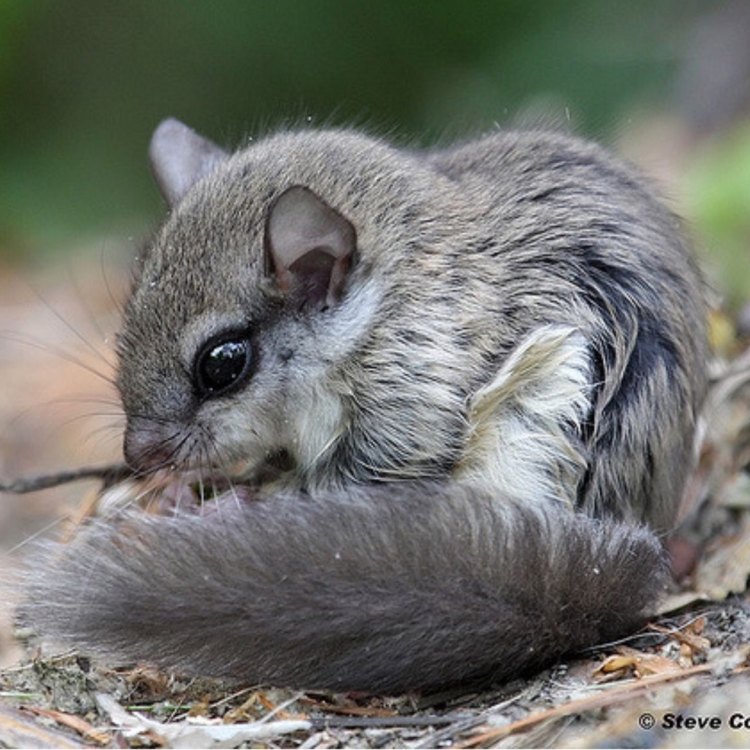
Pteromyini
The Fascinating World of Flying Squirrels: An Unsung Hero of the Animal Kingdom
Flying squirrels have captured our imagination for centuries. These tiny, elusive creatures have long been misunderstood as flying rodents or even supernatural beings. But the truth is, they are a unique and remarkable species that has evolved to navigate the skies with ease.Despite their name, flying squirrels are not capable of true flight, like birds or bats PeaceOfAnimals.Com. Instead, they have a special adaptation that allows them to glide through the air - a membrane of skin called a patagium that stretches between their front and hind legs. This makes them one of the most distinct and intriguing creatures in the animal kingdom.
In this article, we will dive deep into the world of flying squirrels, exploring their size, behavior, threats, and impact on the ecosystem.
Size and Lifespan:
Flying squirrels come in a range of sizes, from small to medium-sized. The smallest species, the dwarf flying squirrel, measures only 3-5 inches (excluding its tail), while the largest, the Indian giant flying squirrel, can grow up to 17 inches in length. They vary in weight too, with some species weighing only a few ounces, while others can weigh up to 2 pounds.Their size, however, does not affect their lifespan. On average, flying squirrels live for 5-6 years in the wild. However, in captivity, they can live for up to 10 years, owing to the absence of predators and access to regular food and shelter Fox Snakes.
Reproduction and Reproductive Behavior:
Like most mammals, flying squirrels reproduce sexually. Mating typically occurs once per year, during the breeding season, which can vary depending on the species and geographic location. Male flying squirrels attract potential mates through vocalizations and scent-marking of their territory.After mating, the female will give birth to 2-6 offspring, called pups, after a gestation period of 40-45 days. The young are born hairless and with their eyes closed, and they are completely dependent on their mother for the first few weeks. Flying squirrels are known for their excellent maternal care, with the mother diligently nursing and grooming her young until they are ready to venture out on their own.
Migratory Patterns and Social Groups:
Flying squirrels are highly adaptable creatures and can be found in a wide range of habitats, from deciduous forests to coniferous forests. Some species, such as the northern flying squirrel, are known to migrate short distances between different habitats, depending on the availability of food and nesting sites.In terms of social behavior, flying squirrels can be either solitary or live in small groups. Solitary species, like the red flying squirrel, have distinct territories and only interact with others during the breeding season. On the other hand, some species, like the southern flying squirrel, form small groups and share nesting sites for warmth and protection.
Nocturnal, Arboreal, and Gliding Capabilities:
One of the most fascinating aspects of flying squirrels is their behavior. They are primarily nocturnal creatures, meaning they are most active at night, sleeping during the day in their nests, which they build in tree cavities or old bird nests. This nocturnal behavior helps them avoid predators, as well as competition for food and resources.Flying squirrels are also arboreal, meaning that they spend most of their time in trees, rarely coming to the ground. This lifestyle is made possible by their impressive gliding abilities, which they use to navigate through the forest canopy to find food and escape predators.
Their gliding capabilities are thanks to their patagium, a parachute-like membrane of skin that spans from their wrists to their ankles. By extending their limbs and shifting their weight, they can control their direction and distance while gliding. Some flying squirrels can glide up to 100 meters in one go, making them the longest gliding mammal in the world!
Threats and Conservation Status:
Unfortunately, like many other species, flying squirrels face various threats to their survival. Habitat loss is the most significant threat, as deforestation and urbanization continue to destroy their natural habitats. This not only affects their food sources but also leaves them vulnerable to predators.Predation is also a significant threat to flying squirrels, with owls, snakes, and other small carnivores being their main predators. These predators rely on their incredible sense of hearing and sight to locate the squirrels as they glide through the air.
Some flying squirrel species are also facing decline due to overhunting for their fur and being considered agricultural pests. As a result, their conservation status varies by species, with some, like the northern flying squirrel, being listed as least concern, while others, like the Japanese giant flying squirrel, are classified as vulnerable or endangered.
Impact on Ecosystem:
Despite their small size, flying squirrels play a crucial role in the ecosystem. They are excellent seed dispersers and help maintain the health and diversity of forests. As they move through the forest, they collect and bury nuts and seeds, which then grow into new trees and plants. This process not only helps disperse seeds but also contributes to forest regeneration and growth.Human Use and Distinctive Features:
Throughout history, humans have interacted with flying squirrels in various ways. Some are hunted for their fur, which is used to make garments and accessories, while others, like the red giant flying squirrel, are considered agricultural pests, often destroying crops and fruit orchards.When it comes to their distinctive features, flying squirrels have many. They have large, bright eyes, allowing them to see well in the dark. They also have a flat tail, which acts as a stabilizer while gliding. And perhaps most noticeably, they have loose folds of skin on the sides of their body, which is the secret to their gliding abilities.
Interesting Facts:
To conclude this article, here are some fun and fascinating facts about flying squirrels:- Flying squirrels are not the only species of gliding mammals; there are also gliding possums, colugos, and sugar gliders.
- Some species of flying squirrels can perform 90-degree turns while gliding, allowing them to navigate through the forest with ease.
- Flying squirrels do not hibernate in the winter but will huddle together in their nests to keep warm.
- Despite being capable of gliding, flying squirrels are not very good climbers, relying mostly on jumping and gliding to move through the trees.
- The fossil record shows that flying squirrels have existed for at least 18 million years.
In conclusion, flying squirrels are undoubtedly one of the most unique and captivating creatures in the animal kingdom. Their gliding abilities, behavior, and impact on the ecosystem make them a vital and fascinating part of our world. As we continue to learn more about these elusive creatures, it is essential to protect and conserve their habitats to ensure their survival for generations to come.
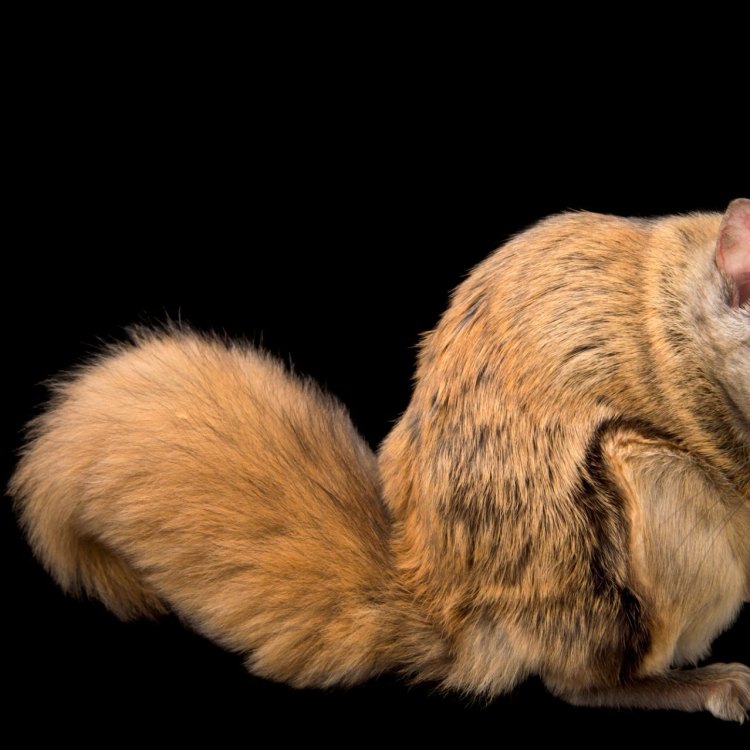
Flying Squirrels: The Most Fascinating Creatures of the Skies
Disclaimer: The content provided is for informational purposes only. We cannot guarantee the accuracy of the information on this page 100%. All information provided here may change without prior notice.

